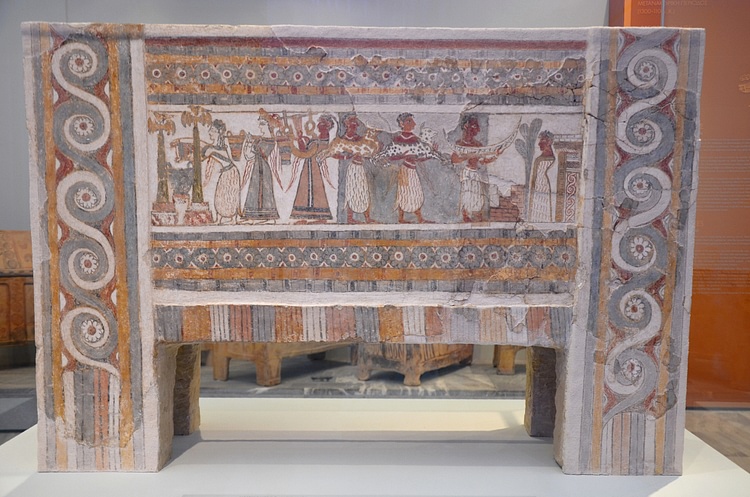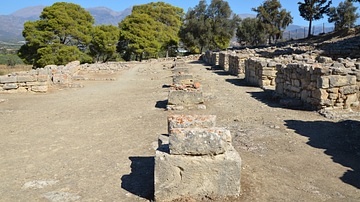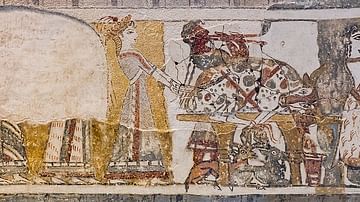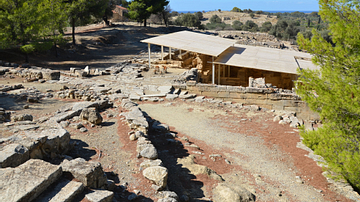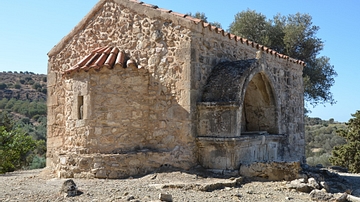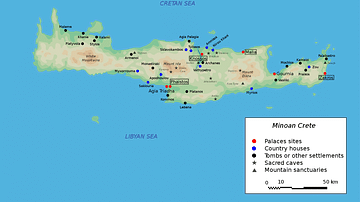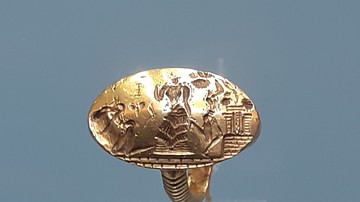Illustration
The Hagia Triada sarcophagus is a Late Bronze Age (1400 BCE) 137 cm-long limestone sarcophagus covered in plaster and painted in fresco and combining features of Minoan and Mycenaean style. The painted frieze shows all the stages of the sacred ceremony which was performed at the burial of important personages. The dead person is depicted in front of his tomb receiving offerings of a boat and two bulls, while libation is being poured between double axes to the accompaniment of a lyre.
Heraklion Archaeological Museum, Crete.
About the Author
Cite This Work
APA Style
Raddato, C. (2019, May 12). Hagia Triada Sarcophagus. World History Encyclopedia. Retrieved from https://www.worldhistory.org/image/10613/hagia-triada-sarcophagus/
Chicago Style
Raddato, Carole. "Hagia Triada Sarcophagus." World History Encyclopedia. Last modified May 12, 2019. https://www.worldhistory.org/image/10613/hagia-triada-sarcophagus/.
MLA Style
Raddato, Carole. "Hagia Triada Sarcophagus." World History Encyclopedia. World History Encyclopedia, 12 May 2019. Web. 30 Mar 2025.

